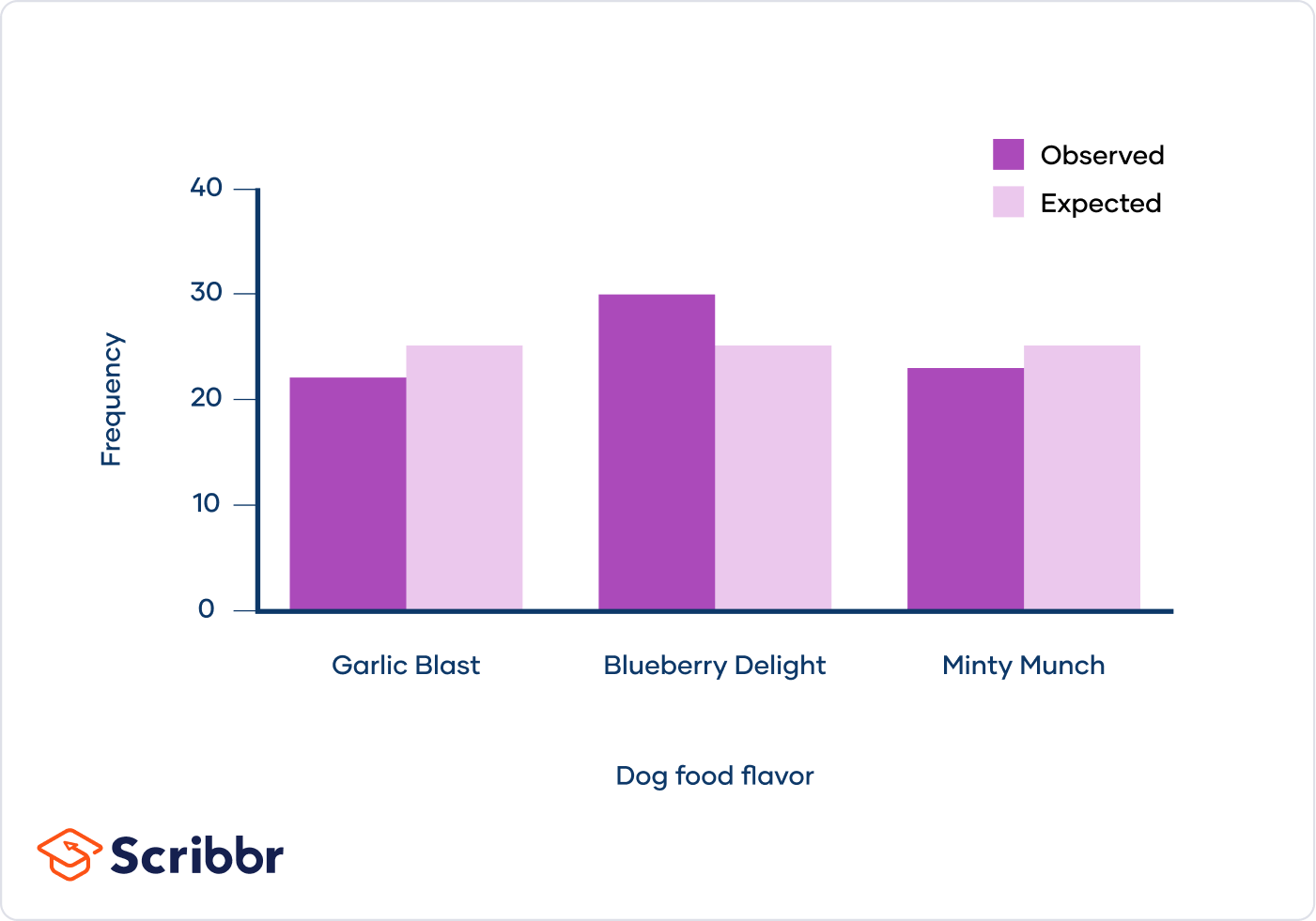To know when to put your dog down, look for signs such as withdrawal, restlessness, avoiding physical contact, excessive panting or shaking, crying or yelping, difficulty breathing, disorientation or confusion, and loss of enthusiasm for walks. It’s important to assess their quality of life and consider if they are in pain or anxious, if you can provide long-term care, and if you fear choosing too soon.
Measuring their pain levels, mobility, appetite, bathroom habits, cleanliness, behavior changes, and your own ability to care for them can help determine their overall quality of life. There are also quizzes available online to help assess your dog’s quality of life.

Credit: www.scribbr.com
Understanding The Difficult Decision
Deciding when to put your dog down is one of the most challenging decisions a pet owner can face. It is a decision that requires careful consideration, compassion, and understanding. It is important to remember that you know your dog best and that you are the one who can assess their quality of life. However, it can still be helpful to gather information and seek guidance in this difficult time.
What Is Considered Poor Quality Of Life For A Dog?
Assessing your dog’s quality of life is crucial in making the decision to euthanize. Understanding what is considered a poor quality of life can guide you in recognizing the signs that indicate it may be the right time to let go. Some signs of poor quality of life in dogs include:
- Being withdrawn or quiet
- Restlessness, unable to get comfortable, or lying in odd positions
- Avoiding physical contact
- Excessive panting or shaking
- Crying or yelping
- Difficulty breathing
- Disorientation or confusion
- Loss of enthusiasm for walks
How Do I Know If I’m Making The Right Decision To Euthanize My Dog?
When contemplating euthanasia, it is normal to feel uncertain and overwhelmed. To help determine if you are making the right decision, here are five key considerations:
- What do you know about euthanasia?
- What’s your pet’s quality of life?
- Is your pet in pain or anxious?
- Can you provide long-term care?
- Do you fear choosing too soon?
How Do I Know My Dog’s Quality Of Life?
Assessing your dog’s quality of life involves observing their behavior and overall well-being. To understand your dog’s quality of life, consider the following:
- Are they in pain?
- Are they struggling to get around?
- Are they eating and drinking normally?
- Are they going to the toilet normally?
- Can they keep themselves clean?
- Has the way they behave changed?
- How are you coping with looking after them?
- Are they coping overall?
Assessing these factors can help you make an informed decision about your dog’s quality of life and whether euthanasia may be the most compassionate choice.

Credit: www.akc.org
Tools For Assessment
When you’re faced with the difficult decision of whether or not to put your beloved dog down, it’s important to have tools for assessment that can guide you in making the right choice. Assessing your dog’s quality of life can help you determine if it’s time to say goodbye. Here are three valuable tools that can assist you in this process:
Pet Quality Of Life Quiz
A Pet Quality Of Life Quiz is an effective tool that allows you to evaluate your dog’s well-being. This quiz consists of a series of questions that cover various aspects of your dog’s daily life, such as their mobility, appetite, pain level, and overall happiness. By answering these questions, you can get a clearer understanding of your dog’s current condition and decide if their quality of life is deteriorating.
Quality Of Life Scale
A Quality of Life Scale is another useful tool that helps assess your dog’s overall well-being. It takes into account various factors, including pain, appetite, physical abilities, and emotional state. By rating these factors on a scale, you can get a numerical score that reflects your dog’s quality of life. This scale can provide you with a more objective perspective and assist you in making an informed decision.
Quality Of Life Scale For Pets Online Calculator
If you prefer a more convenient and accessible option, you can utilize the Quality of Life Scale for Pets Online Calculator. This online tool allows you to input your dog’s specific information, and it will generate a quality of life score based on the data provided. This calculator takes into consideration factors such as pain, mobility, appetite, and mental state. It can help simplify the assessment process and give you a clearer picture of your dog’s current situation.
Remember, these tools are meant to be used as guidance and should be interpreted in conjunction with your own observations and the advice of a veterinarian. They can provide valuable insight, but ultimately the decision to euthanize your dog is a deeply personal one that should be made with love and consideration for their well-being.
Seeking Guidance
Seeking guidance on how to know when to put your dog down? Take our quiz to assess your dog’s quality of life and make the right decision for their well-being.
Deciding when to euthanize your beloved dog is a difficult and emotional decision. It’s normal to feel uncertain and overwhelmed by this choice. Seeking guidance and support during this time can provide clarity and comfort. Consulting with a veterinarian is crucial in understanding your dog’s health and quality of life. Below, we will discuss when is the ‘right’ time and the signs that indicate it’s time to consider euthanasia. Remember that this quiz is just a tool to help you reflect on your dog’s well-being, but the ultimate decision should be made in consultation with a veterinarian.
When Is The ‘right’ Time?
As a pet owner, it’s natural to wonder when is the ‘right’ time to consider euthanasia. Unfortunately, there is no one-size-fits-all answer to this question. Each dog is unique, and several factors determine the right time. One crucial aspect to consider is your dog’s quality of life. If your dog is experiencing persistent pain, discomfort, or is unable to perform basic functions such as eating, drinking, or going to the toilet, it may be an indication that their quality of life has significantly declined.
Signs It’s Time To Euthanize
Recognizing the signs that indicate it may be time to euthanize your dog is essential. Here are some common signs to watch for:
- Being withdrawn or quiet
- Restlessness, unable to get comfortable, or lying in odd positions
- Avoiding physical contact
- Excessive panting or shaking
- Crying or yelping
- Difficulty breathing
- Disorientation or confusion
- Loss of enthusiasm for walks or activities they once enjoyed
If you notice these signs, it’s essential to consult with a veterinarian to assess your dog’s overall health and to discuss their condition in detail.
How Will I Know When It’s Time?
Determining when it’s time to say goodbye to your dog is a deeply personal decision. While a veterinarian can provide guidance, ultimately, you know your dog best. Here are some considerations to help you in the decision-making process:
- What do you know about euthanasia and its implications?
- Assess your dog’s quality of life. Are they in pain or experiencing anxiety?
- Can you provide the necessary long-term care required by your dog’s condition?
- Do you fear choosing euthanasia too soon or prolonging your dog’s suffering unnecessarily?
Reflecting on these questions can aid in determining the right time to consider euthanasia, but remember to consult your veterinarian for professional advice.
Remember, this quiz is not an alternative to professional advice. If you are unsure or have concerns about your dog’s health, always consult with a veterinarian.

Credit: www.amazon.com
Frequently Asked Questions On How To Know When To Put Your Dog Down Quiz
How Do I Know It’s Time To Put My Dog Down?
If your dog is withdrawn, restless, avoiding physical contact, panting excessively, or experiencing difficulty breathing, it may be time to consider putting them down. Loss of enthusiasm for walks, disorientation, confusion, or lying in odd positions are also signs. When there are too many bad days in a row or your dog seems turned off to life, their quality of life may be compromised.
Consider if your dog is in pain or anxious, if you can provide long-term care, and if you fear choosing too soon.
What Is Considered Poor Quality Of Life For A Dog?
Poor quality of life for a dog includes being withdrawn, restless, avoiding physical contact, excessive panting or shaking, crying, difficulty breathing, disorientation, loss of enthusiasm for walks, nausea, vomiting, diarrhea, seizures, unrelenting pain or discomfort, and inability to breathe.
How Do I Know If I M Making The Right Decision To Euthanize My Dog?
Determining whether to euthanize your dog is a difficult decision. Consider what you know about euthanasia and your pet’s quality of life. Assess if your pet is in pain or anxious, if you can provide long-term care, and if you fear choosing too soon.
Seek guidance from a veterinarian for a more accurate assessment.
How Do I Know My Dog’s Quality Of Life?
To determine your dog’s quality of life, observe for signs such as withdrawal, restlessness, avoidance of physical contact, excessive panting or shaking, crying or yelping, difficulty breathing, disorientation or confusion, and loss of enthusiasm for walks. Consider their pain levels, mobility, eating and drinking habits, toilet habits, ability to groom themselves, changes in behavior, and your own ability to care for them.
Conclusion
Deciding when to put your beloved dog down can be a difficult and heartbreaking decision to make. By considering the signs of poor quality of life, your pet’s overall well-being, and your ability to provide long-term care, you can determine if it’s the right time for euthanasia.
Remember to assess their pain levels, mobility, appetite, and behavior changes. It’s important to trust your instincts and consult with a veterinarian for guidance. Ultimately, you want to ensure your furry friend is comfortable and at peace in their final days.


